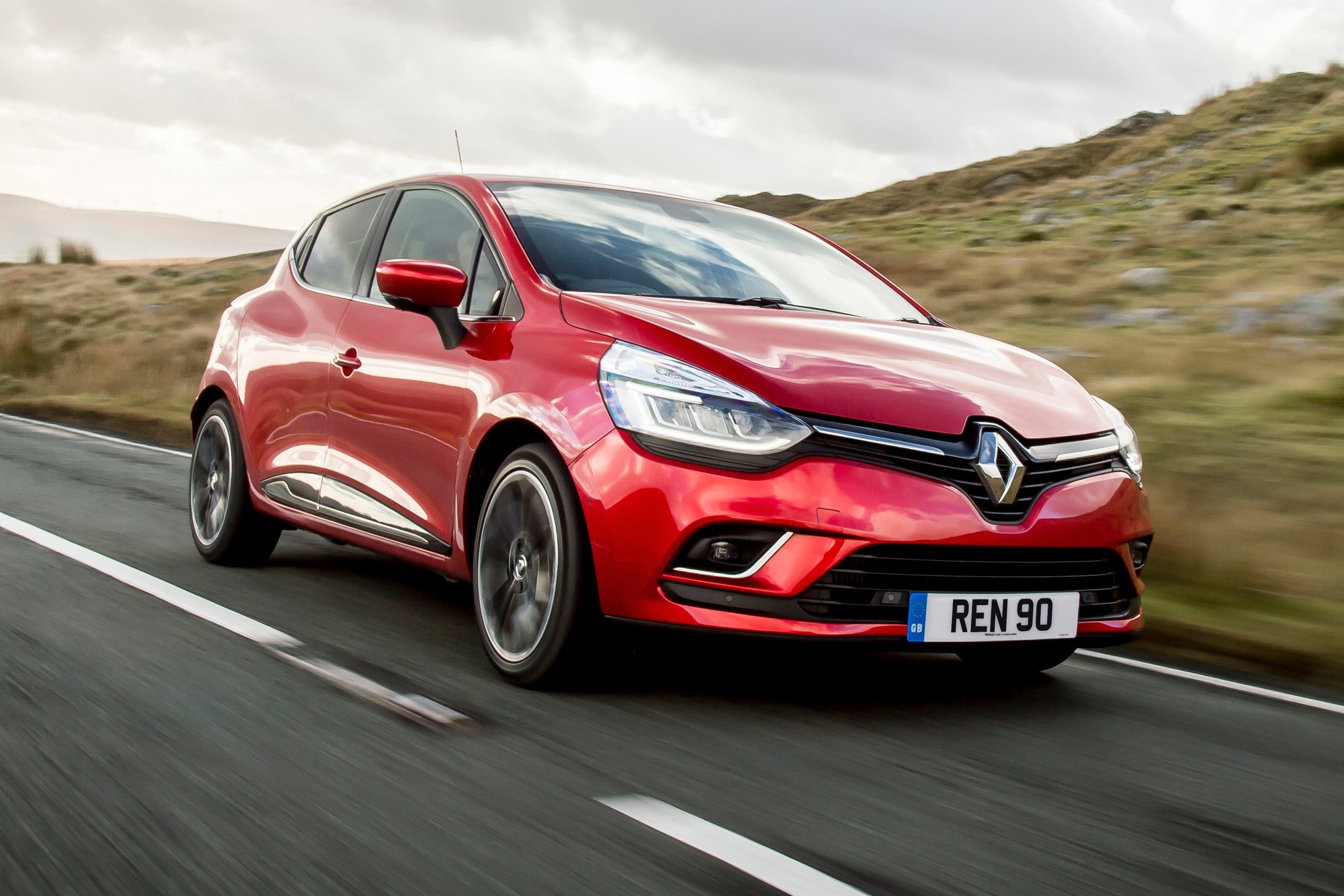Renault Clio (2013-2019) Review
Written by Andrew Brady
Quick overview
Pros
- Quiet and calm on all types of road
- Superb 0.9 TCe turbo petrol engine
- Generous with equipment and safety
Cons
- Some interior finish not up to par
- Less agile than a Ford Fiesta
- 1.2-litre petrol feels gruff
Overall verdict on the Renault Clio
"In this Renault Clio review we're looking back at what was a hugely popular supermini in a segment typically dominated by the Ford Fiesta and Volkswagen Polo. Decent to drive and good value, it was the Renault Clio's eye-catching looks that seemed to be a hit with buyers, and despite the earliest examples now being a decade old it still looks fresh. With a massive choice on the used market it makes a sensible secondhand buy."
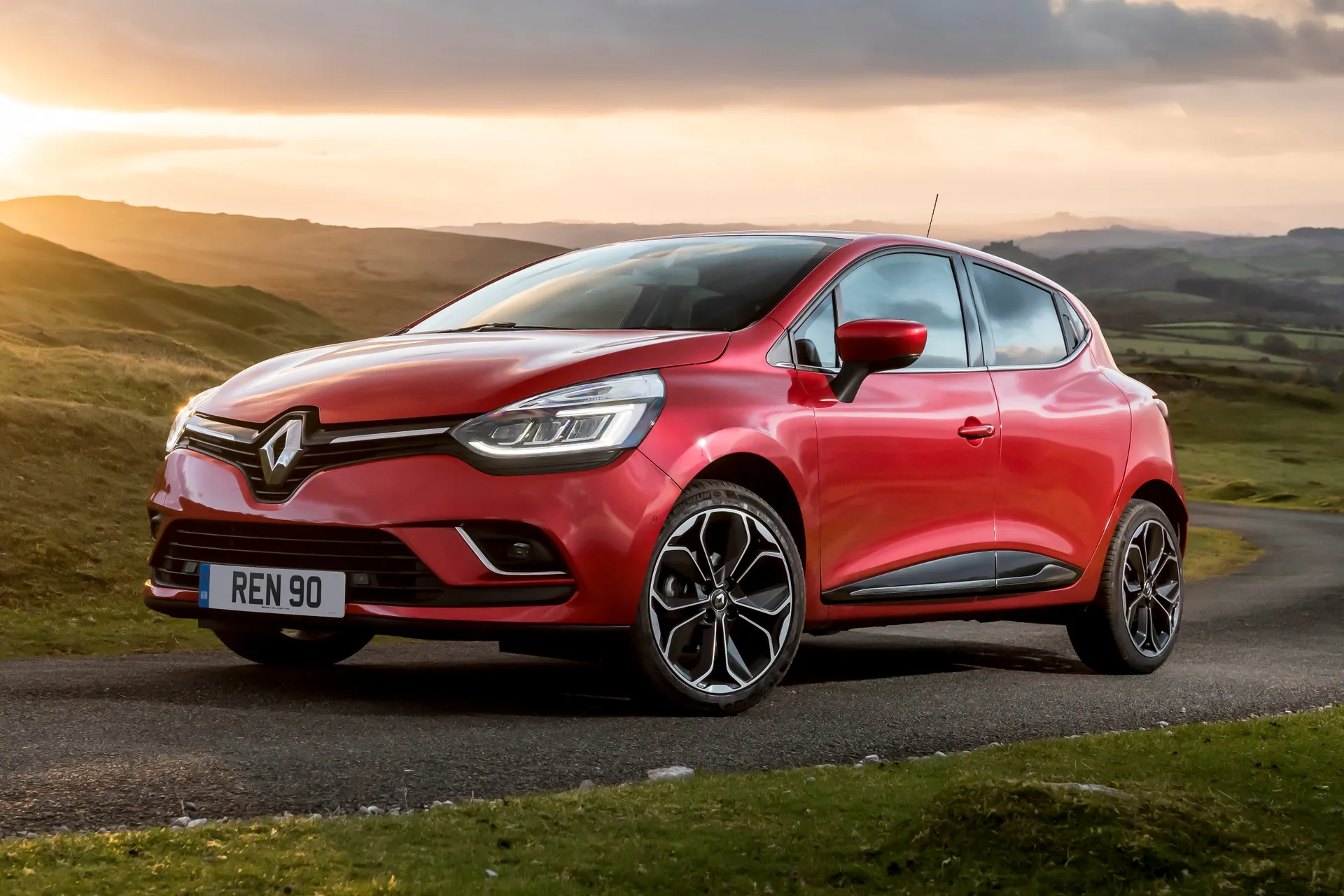
Renault achieved a premium look in a mainstream small hatch thanks to the crisp appearance of the headlights that blended into the front grille. This line went on to surround the large Renault ‘lozenge’ logo. It was a mark of how confident Renault felt in this new hatchback’s good looks that its badge was so big. After all, why not shout about it and let people know who made the car when it was such a pretty thing?
Buyers certainly didn’t mind telling the world they were driving a Renault Clio and the French car settled in to be one of the better sellers in its sector. Never quite a rival for the Ford Fiesta, Vauxhall Corsa and Volkswagen Polo for outright volume of sales, the Renault Clio nevertheless impressed in other ways.
For starters, the engine line-up that Renault organised for this Renault Clio included the excellent three-cylinder 0.9-litre TCe turbo petrol. Offered with 90PS, this is the best motor to choose for almost any need thanks to its keen power delivery, refinement and low running costs. Late on this Renault Clio’s life, a 75PS version of the 0.9-litre petrol engine arrived.
Other engines in the range included a 1.2-litre petrol that could be had in non-turbo 75PS form or turbocharged with 120PS. There was also a smooth 1.5-litre turbodiesel with 90- or 110PS. You could order the diesel or the 1.2 TCe 120 with a six-speed dual-clutch automatic gearbox, which addressed the slightly notchy feel of the five-speed manual.
To make the most of this engine’s power, Renault also shed 100kg of weight from this fourth generation model compared to its immediate predecessor. This not only helped with efficiency, but made the latest car much more enjoyable to drive. It handled with more eagerness in corners and the steering provided much more interaction between driver and front wheels.
However, the overriding impression from behind the wheel of the Renault Clio is of a very grown-up, accomplished small car. This stems from the smooth ride that lets the Renault Clio flow along roads with a serenity that few of its competitors can come close to. This stands up whether you’re nipping around town or heading along the motorway.
It’s a similarly positive story inside the Clio, where the cabin offers a good looking dash and in most models a 7-inch touchscreen that works with Renault’s R-Link infotainment system. There is also better than class average space of passengers and luggage, though the French car doesn’t quite get up to the same level as the Kia Rio or Skoda Fabia.
This is also true of the cabin’s construction quality, which feels one step below the best cars in the sector. This was addressed to some extent with a facelift in mid-2016, and the Clio always came generously equipped in its various trims and was one of the safest cars in the segment.
If you're looking for the newer version, you need our Renault Clio review.
Is the Renault Clio right for you?
If you value style and refinement in a small hatch more than outright space or the last word in handling, then the Renault Clio should be on your shopping list. This fourth generation Clio is bigger than the one that went before, so it offers better cabin and luggage space, putting it on a par with the Ford Fiesta.
That bigger size also made the Clio feel more grown-up in the way it dealt with motorways, as well as the ruts and niggles that make up many road surfaces. Less weight helped here as the suspension has less bulk to deal with, while the electric power steering makes it more fun and simple to park.
As well as this, Renault packed in as much safety kit as it could to the Clio, so you get six airbags, ISOFIX child seat mounts and ESC stability and traction control. On top of this, the Renault Clio scored very well for both adult and child occupant safety. Every version also comes with Bluetooth connection, electric windows and cruise control, while Dynamique versions have nav included.
What’s the best Renault Clio model/engine to choose?
There’s no doubt the best engine to go for in the Renault Clio is the 0.9-litre TCe turbo petrol motor. It was offered in 90PS form throughout the fourth generation Clio’s life and latterly with 120PS to replace the lacklustre 1.2 turbo.
The 0.9 TCe engine may be small in capacity and have three-cylinders where most rivals have four, it’s not short on low- and medium rev punch. It pulls clean and strong off the line and makes cruising in town or on the motorway a relaxed affair. It’s only on steep hills or country lanes where you might discover it’s not quite so keen on revving harder.
However, the 0.9 TCe is very easy on fuel and CO2 emissions, so it’s cheap to run and service. Just about our only small gripe is it comes with a five-speed manual gearbox with a slightly notchy shift where most rivals offered a six-speeder.
What other cars are similar to the Renault Clio?
The Renault Clio is right in the thick of the small hatch firmament and that means competition comes from all of the big hitters. They comprise the superbly rounded Ford Fiesta, Vauxhall Corsa and Volkswagen Polo, all of which offer a wide variety of engines and gearbox combinations, as well as three-door bodies that Renault cannot match.
A Clio buyer might also consider the Skoda Fabia or Kia Rio should they want more interior space, while the Peugeot 208 and SEAT Ibiza are hard to fault. It’s also hard to ignore the Honda Jazz and Toyota Yaris when it comes to superb build quality and reliability.
Comfort and design: Renault Clio interior
"There is an elegant simplicity to the design of the Renault Clio’s dash and driving environment. The main dials are simple and easy to read, with a large digital speedo display to make sure you don’t wander over the limit inadvertently."
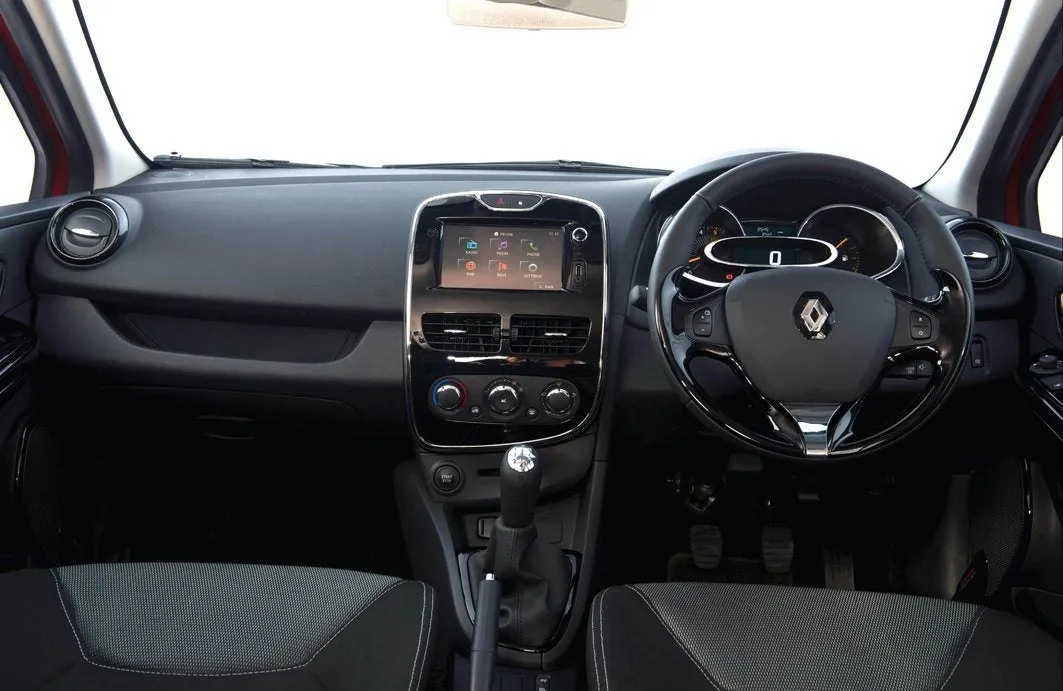
In the centre of the dash on the upper two trims, and an option for those lower down the spectrum, is the 7-inch touchscreen for the R-Link infotainment system. It’s very easy to use and the screen offers good sensitivity at the press of a finger to make it quick and responsive in use. The graphics are also clear to see when driving, keeping your attention on the road ahead.
Ventilation and heating controls are easy to fathom and use thanks to their rotary dials. However, some of the other minor switch gear on and behind the steering wheel is fussier and less intuitive to operate.
On the plus side, the steering wheel itself moves through wide arcs of height and reach adjustment. Coupled to the standard driver’s seat height movement for all models of Renault Clio, it ensures that drivers of all shapes and sizes can find a good seating position for day-long comfort. However, the foot pedals are slightly offset, which can induce an ache in the driver’s knees or hips on lengthier trips.
The driver is afforded a good view out and to the sides of the car, making it a doddle to park and to place in city traffic. Like many other small hatches, though, the Renault Clio has thick rear pillars that make it trickier when swapping lanes on the motorway or backing into a parking spot. Only the top spec Dynamique S version comes with standard reversing sensors to counter this problem.
Quality and finish
At first sight, all is well with the world in the Renault Clio’s cabin. It’s good to look at and the padded dash top imparts the sense of a more premium product than the French car’s obvious rivals. However, this impression is short-lived because as soon as you start to feel most of the other plastics in the car’s interior, you notice they have that hard, brittle finish that shows they have been finished to a strict budget rather than the highest standard.
This is also true of other areas of the Renault Clio. For instance, the infotainment screen may be simple to use, but the sat-nav will not accept a seven-digit postcode and that makes it a pain to use on many occasions as you either have to type in a longform address or rely on your smartphone’s map for directions.
A saving grace is the comfort of the seats. They have more padding than most cars in this class, which not only offers better cushioning on longer trips but good support under the front occupants’ thighs.
Infotainment: Touchscreen, USB, nav and stereo in the Renault Clio
Only the two top Dynamique models of Renault Clio come with the 7-inch infotainment monitor as included kit. By the standards of the day when the car was launched in 2013, the infotainment was easy to use, though some will find the various sub-menus frustrating compared to more modern systems with quick shortcuts to your desired function.
Still, the display itself is easy to read and Renault’s R-Link system makes it easy to pair your smartphone with the car and access its various apps. R-Link was only standard on the Dynamique S model, so it’s a prized find on a lower trim version.
As for the rest of the Renault Clio’s information displays, the dash is easy to read and features a large digital speedometer that makes it a cinch to see what rate of knots you’re travelling at with just a quick glance. The rest of the dials are clear and simple, though you may find the font used for the onboard information screen makes the cabin feel a bit dated next to the likes of a MINI or Volkswagen Polo.
Space and practicality: Renault Clio boot space
The fourth generation Renault Clio was designed as a five-door model only, so it makes no compromises when it comes to rear seat accommodation. It’s one of the more spacious small hatchbacks in the back and can easily allow adults to sit upright without worrying about their heads brushing the ceiling.
It’s a shame this amount of head space is not backed up by as much room for knees and shoulders, though the Renault is still better able to cope with carrying a pair of grown-ups than its rivals bar the Kia Rio and Skoda Fabia. For kids, it’s ideal and there are two ISOFIX child seat mounts to securely hold infant pews in place. Access to the rear seats is better than most thanks to the five-door design, though the sweep of the rear of the aperture can make it tricky when lifting a kiddy seat in or out.
Another point to note about the styling of the Renault Clio that impacts on the rear quarters is the high window line. It makes the car look ace from the outside, but on the inside it means smaller children are left with a very limited view out of the back door windows.
Round the back, the boot serves up 300 litres of capacity, putting it among the best in class. The load space is a regular shape and the loading sill isn’t very high for when you need to lift in heavier shopping bags. The back seat has a 60/40 split and tumbles forward easily to reveal up to 1146 litres of carrying ability and makes the Renault one of the most roomy in the sector. The only caveat here is that, when folded, the seats leave a step in the load floor, so pushing bulky boxes into the car is more difficult than it might be.
Renault fits four securing hooks to help tie down loads, which is handy, but we’d be wary of bashing the plastics back here as they feel fragile and are prone to scuffs and scrape marks.
The Renault Clio dimensions are 4063mm long, 1945mm wide and 1448mm tall.
Handling and ride quality: What is the Renault Clio like to drive?
"Renault pitched the Clio’s driving qualities very well. Rather than trying to compete head-on with the class-defining Ford Fiesta’s handling talents, the Clio opted for a more supple approach. This works very well if you’re looking for a small hatchback that puts comfort as its main priority."
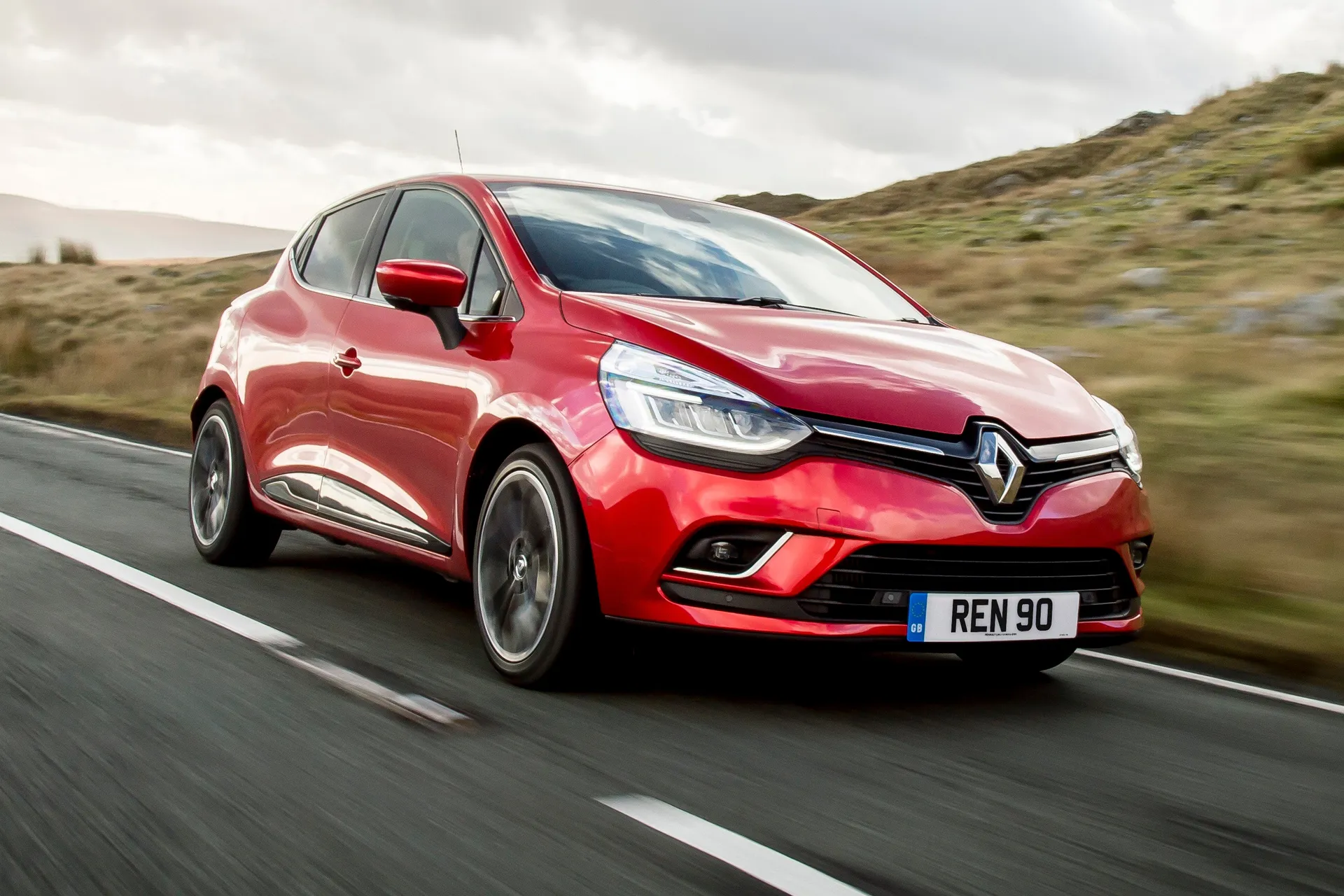
This comfort does not come at the expense of handling ability, though, so the Renault Clio lopes along ratty road surfaces at all speeds and in all conditions with a graceful stride. It makes the Renault a very relaxed place to be on longer trips and imbues it with a sense of maturity most of its rivals cannot match.
As for the handling, it’s very safe and assured, as you would expect from Renault which prizes safety very highly. It’s also nimble-toed when it comes to corners, so the Renault Clio can be stirred into some fun when the driver is in the mood. Of course, if you want the full-on plastered smile of great handling, there's also the Clio Renaultsport hot hatch.
Or, straddling the divide between the standard Renault Clio range and the Renaultsport is the GT Line model. It has suspension that has been stiffened up by 30% over normal and comes with RS Drive to give the driver a choice between Normal and Sport settings for the engine, gearbox, accelerator and steering feel. This model comes with the EDC automatic gearbox, so sharper changes between ratios helps with acceleration.
For more practical purposes, the Renault Clio is one of the best small hatch you can choose thanks to light, accurate steering. It makes it a pleasure to use in the city where your arms will not get weary when threading through narrow streets. And despite being longer and wider than its predecessor, this fourth generation Clio is still a piece of gateau to park.
What engines and gearboxes are available in the Renault Clio?
Renault has kept it simple with the engine offerings in this generation of Clio. You have a choice of 0.9- and 1.2-litre petrol engines and a single 1.5-litre turbodiesel. We’ll start with the petrols as they are the ones most buyers will look to.
The 75PS 1.2-litre motor was followed up not long after the Clio’s launch with a turbocharged version offering 120PS. Decent enough to use and available with a six-speed automatic gearbox, this engine is not going to stir your emotions, though it might rouse your ire due to its flat feel and noise at higher revs.
For these reasons, we’d guide you towards the 0.9-litre TCe turbo petrol. This three-cylinder engine started life in the Clio with 90PS and a 75PS version was added later in the car’s production life. Stick to the 90PS and you have all the small hatch performance you’ll ever need in day to day driving. It’s an eager little engine with better refinement than you would credit a three-cylinder motor with. It’s only at high revs where it begins to feel a touch stressed, but it’s already given its best by then so better to change up a gear in its five-speed manual transmission.
The 1.5-litre turbodiesel is impressively quiet and economical, so it you need a small car to travel big distances this is a sound choice. Most diesels come with the five-speed manual gearbox, but the six gear auto is also an option and it works well with the diesel’s generous spread of power. The only grit in the oil here is the manual ’box in all Clios has a notchy, slow-witted action.
Refinement and noise levels
By their nature, small capacity three-cylinder engines are not the smoothest and the Renault’s is no different to those found in various Ford, Vauxhall and Volkswagen cars. Forgive the Clio’s 0.9-litre TCe engine this foible and it’s a good companion that keeps its characteristic warbling note to the right side of acceptable on the noise scale.
The 0.9 TCe is also quite smooth, so you don’t feel the vibrations from it at idle in the way some others can make you think there’s a cement mixer been let loose under the bonnet.
Choose the 1.2-litre petrol and it’s also decently hushed and smooth at moderate engine speeds, but it becomes progressively harsher when asked to work hard. Sadly, you will have to work the 75PS version hard if you want anything approaching reasonable performance. Step into the 1.5-litre turbodiesel and it impresses with its hassle-free approach and quiet.
Other sources of noise are usually well suppressed in the Clio unless you choose a version with the larger 17-inch alloy wheels fitted. On rougher roads, they kick up more noise, though the Renault’s interior remains more isolated from wind and tyre roar than most in the class.
Safety equipment: How safe is the Renault Clio?
The fourth generation Renault Clio encapsulated the French firm’s approach to safety by pushing it to the top of its priorities. This made the Clio a strong contender for family buyers and it remains a safe choice now.
Every model in the range comes with twin front, side and curtain airbags included as standard, along with anti-whiplash headrests for all five occupants. Each person in the car gets a three-point seat belt, two whole ISOFIX kiddy chair mounts are positioned in the back seats.
Renault also fits ESP traction and stability control as standard, as well as a speed limiter to remind the driver if the car exceeds a pre-set upper speed. On top of this, there’s hill start assist to prevent the car from rolling backwards as you make to pull away on steeper inclines. The Clio also has daytime running lights on every version, which put it ahead of most of the competition when it was launched in 2013.
As for crash resistance, the Clio took a five-star score when tested by Euro NCAP and also came out very well for adult and child occupant safety. It also rated a very impressive 99 per cent score for safety assistance systems at the time of its test in 2012 ahead of being launched. These tests also showed the Renault Clio did its bit for pedestrians with a 66 per cent score in this area.
MPG and fuel costs: What does a Renault Clio cost to run?
"For those seeking to eke out the very most from the Renault Clio, the 1.5-litre dCi 90 turbodiesel in Stop and Start Eco trim is the one to look for. It came with an official combined consumption figure of 88.3mpg. In Real MPG conditions, though, this works out at 60.5mpg, or 76 per cent of the claimed number."
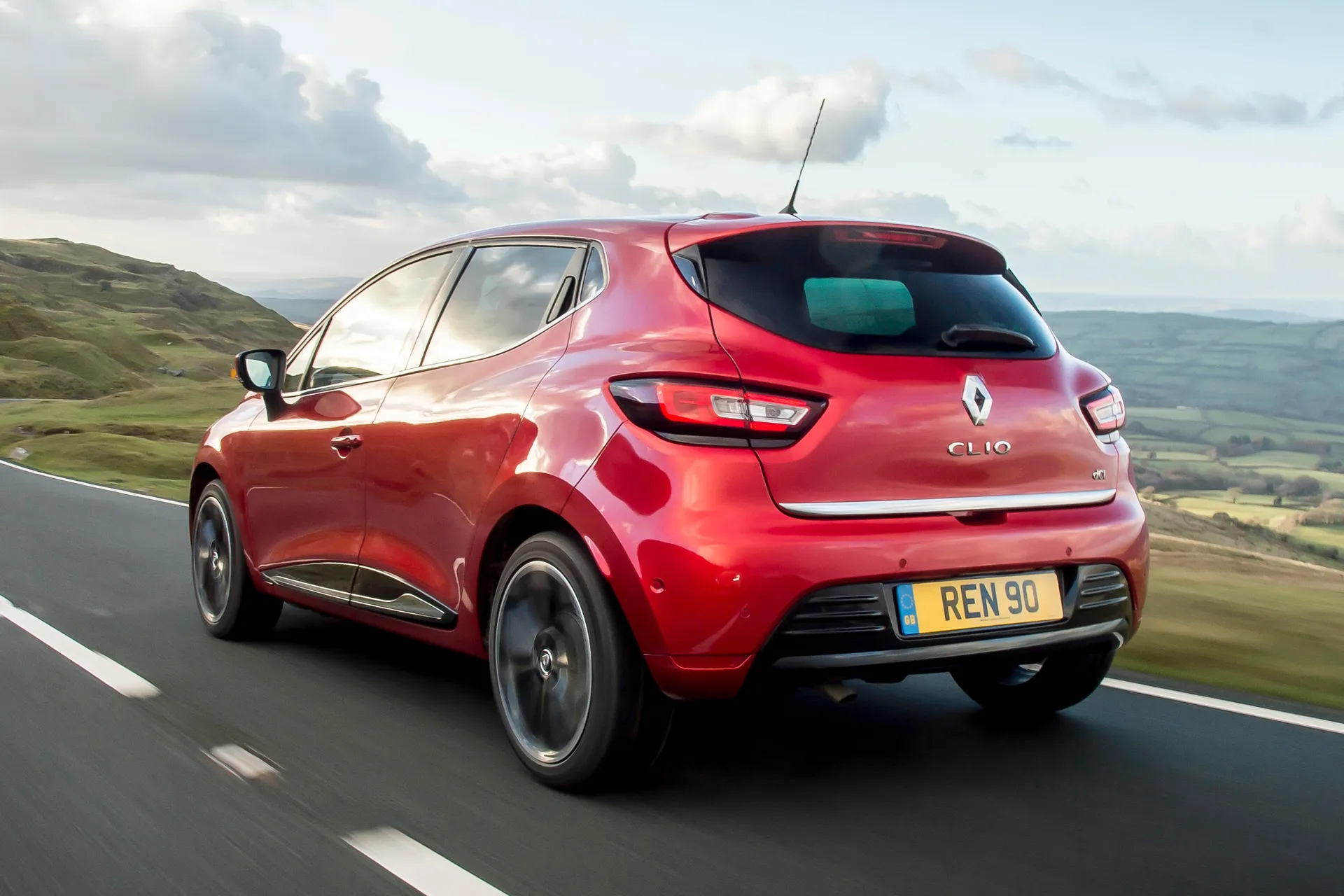
If you’d rather have a petrol engine, again the 0.9-litre TCe 90 is the one to hunt down as it offers a claimed 61.4mpg and a Real MPG of 48.1mpg. That comes in at a decent 80 per cent of its official average economy claim.
How reliable is a Renault Clio?
The Renault Clio scored a disappointing 8.36 out of 10 for reliability in the HonestJohn.co.uk Satisfaction Index, the lowest score of any Renault in the survey and considerably less than key rivals. Owners have reported issues with suspension and electrics, while recalls have been issued for brake systems and bodywork, so check if your car has had any required work carried out.
As a brand Renault also performed poorly, finishing 27th out of 30 manufacturers overall.
Insurance groups and costs
Find a Renault Clio in 1.2-litre Play or Expression trim and it falls into insurance group 3, which is very low for a small hatch and makes this car ideal for any young driver or those who have just passed their driving test.
A 0.9 TCe 90 in Dynamique trim will be pricier to insure, but not by a huge amount as it sits in group 7. Upgrade that to the version with MediaNav to gain satellite navigation and it edges into group 10, so it’s still easily affordable.
At the other end of the scale, the GT Line Nav with the 1.2-litre engine is the most expensive non-Renaultsport version of the Clio to insure. It is in group 15.
VED car tax: What is the annual road tax on a Renault Clio?
All fourth generation Renault Clios will now pay their road tax as a used vehicle, but this varies depending on if the car was registered before or after 1st April 2017. For cars on the road after this date, they will pay a flat rate of £165 per year for Vehicle Excise Duty.
For cars registered before this, you need to be sure which engine version you pick if you want to minimise road tax costs. The 0.9 TCe turbo petrol engine can offer emissions as low as 90g/km in a lower trim on smaller wheels and with the Stop and Start Eco option, meaning VED is free. Others fall into the £20 per year bracket.
The 1.2 TCe 120 can stray as high as 120g/km, which means £30 per year for road tax. However, the 1.5 dCi turbodiesel offers sub-100g/km carbon dioxide emissions to qualify for free road tax.
How much should you be paying for a used Renault Clio?
"You will find high mileage Renault Clios from 2013 starting at £3,000, but examples with a more age-average distance under their wheels of 75,000 miles come in at £4,500."
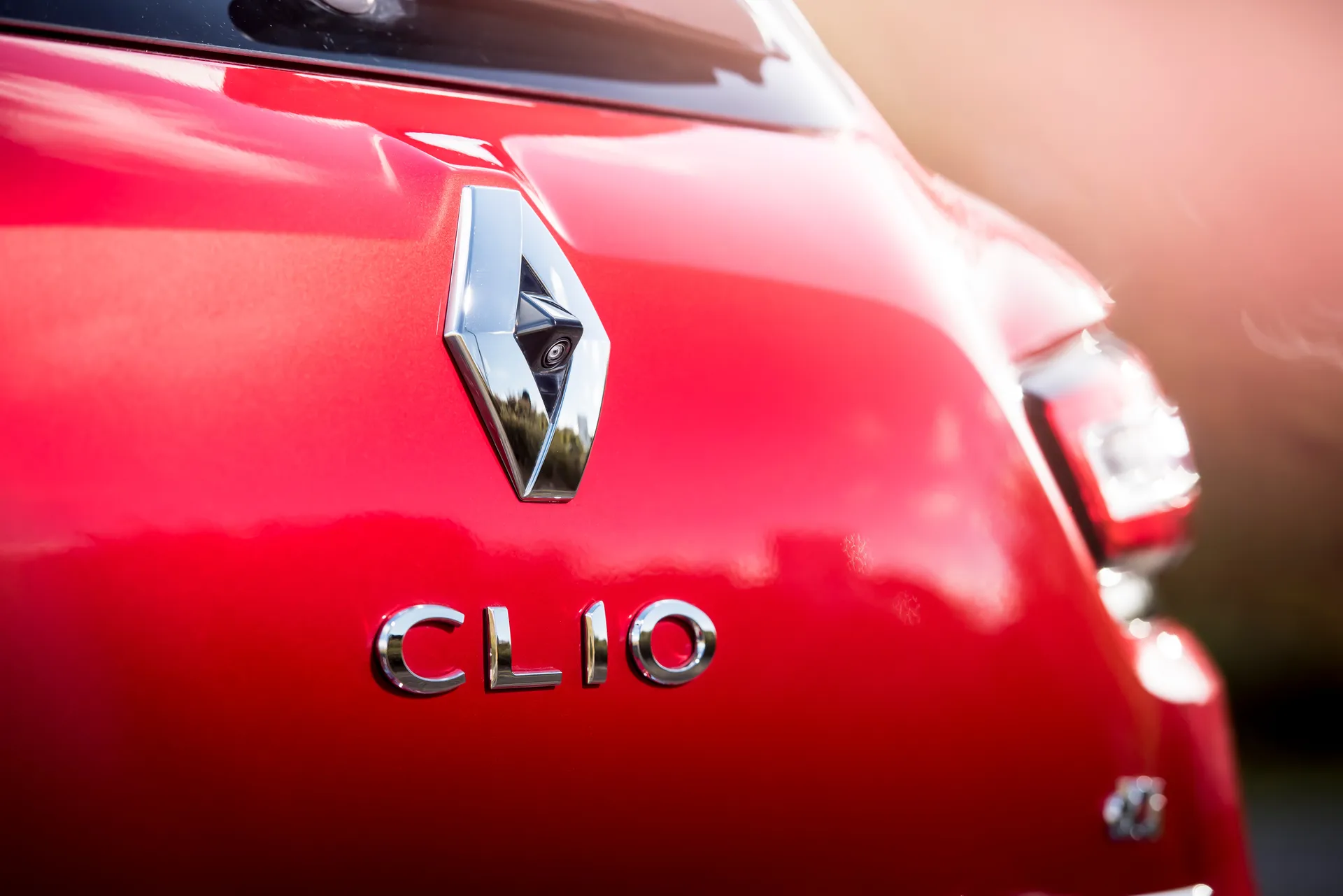
This will give you a choice of petrol or diesel models in a variety of trims, so look out for a Dynamique version with MediaNav to get the best level of equipment.
Move forward to the end of this Clio’s production life and a year-old example with 10,000 miles to its name can be had for £14,000.
Trim levels and standard equipment
The fourth generation Renault Clio was launched in four trims, starting with the Expression that had steel wheels, daytime running lights, and cruise control. It also has a CD stereo with USB port, electric front windows and height adjustable driver’s seat.
The Renault Clio Expression+ gains 16-inch alloy wheels, air conditioning and front fog lights. You could also choose the Eco option for the Expression models that has an ECO mode to reduce fuel consumption by up to 10 per cent. It also provides a driving style monitor with red, yellow and green traffic light indicator to show how efficiently the driver is at the controls.
Renault Clio Dynamique MediaNav trim brings sat-nav and 7-inch touchscreen, as well as the ECO mode, gloss black trim inserts, keyless entry, and automatic wipers and lights. The S version of this trim further adds 17-inch alloys, electric rear windows and folding door mirrors, climate control, and parking sensors.
The sporty Renault Clio GT Line has firmer suspension, twin chrome exhaust tail pipes, 17-inch alloy wheels in an anthracite colour and matching rear diffuser. Inside, it has Renaultsport seats. A GT Line Look pack was offered for the Dynamique S in early 2015, while a facelifted Clio was introduced for the middle of 2016.
The Clio was revised again in mid-2018 when Bluetooth was added to all models. The trims were now Renault Clio Play, Renault Clio Iconic and Renault Clio GT Line. Play matched the Expression+ for kit, while the Iconic took over from the Dynamique versions.
Ask the heycar experts: common questions
Is a Renault Clio a good car?
Are Renault cars any good?
Why is the car called Clio?
Get our latest advice, news and offers
Keep me updated by email with the latest advice, news and offers from heycar.
By submitting you agree to our privacy policy
